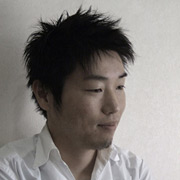
GYOUTOKU Tatsuyuki
- Specialization
- Product Design / Planning / Branding

[Design Fundamentals 3 / Year 2]
This class is a collaborative class with a tabi sock maker. Students attempt to create new value within the market for tabi, a kind of traditional Japanese footwear. The goal is not simply to create a product but to design in response to the business as a whole and to make convincing product proposals through repeated prototyping and product inspection.
[Product Communication 1D / Year 3]
This class is a university-industry collaboration with a company that manufactures measuring instruments and medical equipment. Students are challenged to think about how to connect people and society on the theme of interaction design. After a tour of the company and discussions with employees, students propose and develop products based on a given theme.

Through product sketches, students deepen their understanding of structures and materials before moving on to physical models. Students also learn basic skills such as drafting and how to use graphic software.
Working on the theme of home appliances, students propose ways of solving problems found in everyday life. Students also learn about color design, including the way color affects people.
Students participate in collaborative projects with companies and learn about cutting-edge technology, designs that meet users’ needs, the process of product manufacturing, and marketing and promotion.
Students work on designing a product with the user in mind, one that will change society for the better, utilizing their newfound design abilities cultivated over the past four years.
KUNITANI Yuka / Fourth-year student
Graduation Exhibition2022 Chairman's Award
TAKAHASHI Kosuke / Fourth-year student
SEKIYAMA Hazuki / Fourth-year student
NISHIYAMA Shiori / Fourth-year student
SHIMOHARA Teruki / Fourth-year student
ONO Yuma / Fourth-year student
LI PING / Fourth-year student
Graduation Exhibition2023 Encouragement Award
TANAKA Moeko / Fourth-year student
This studio is often used by classes where students handle plaster as a space for students to give physical shape to their ideas.
PICK UP!


An advanced processing room equipped with the latest 3D printers and laser processing machines that can form complex shapes, process details, and generate detailed parts based on digital data.

A ceramics studio equipped with a potter's wheel for shaping and a kiln for firing.

Classes are also held in the labs set up for each year level.

